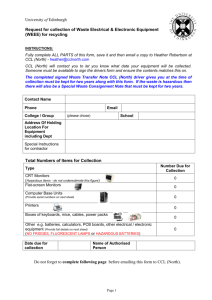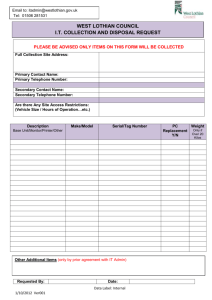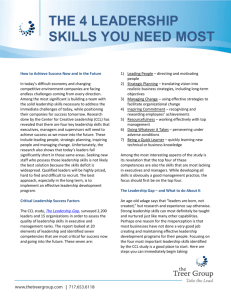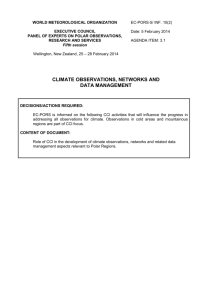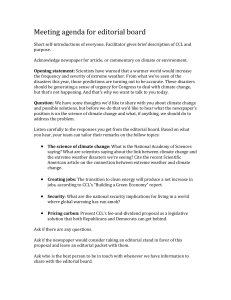planning process
advertisement
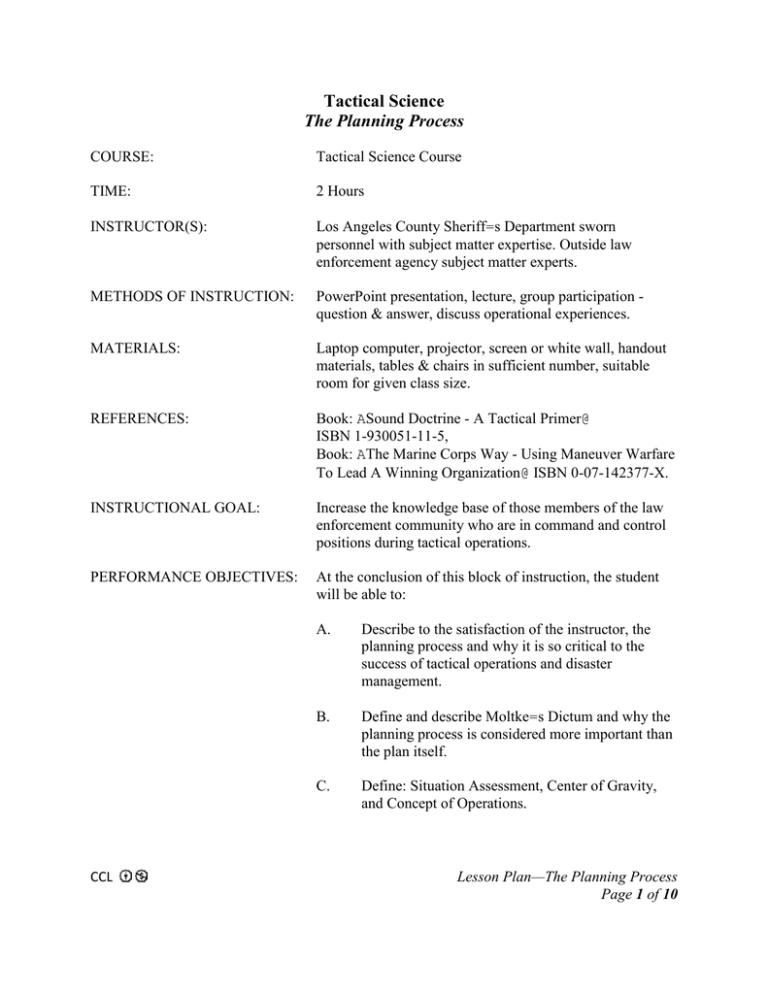
Tactical Science The Planning Process COURSE: Tactical Science Course TIME: 2 Hours INSTRUCTOR(S): Los Angeles County Sheriff=s Department sworn personnel with subject matter expertise. Outside law enforcement agency subject matter experts. METHODS OF INSTRUCTION: PowerPoint presentation, lecture, group participation question & answer, discuss operational experiences. MATERIALS: Laptop computer, projector, screen or white wall, handout materials, tables & chairs in sufficient number, suitable room for given class size. REFERENCES: Book: ASound Doctrine - A Tactical Primer@ ISBN 1-930051-11-5, Book: AThe Marine Corps Way - Using Maneuver Warfare To Lead A Winning Organization@ ISBN 0-07-142377-X. INSTRUCTIONAL GOAL: Increase the knowledge base of those members of the law enforcement community who are in command and control positions during tactical operations. PERFORMANCE OBJECTIVES: At the conclusion of this block of instruction, the student will be able to: CCL A. Describe to the satisfaction of the instructor, the planning process and why it is so critical to the success of tactical operations and disaster management. B. Define and describe Moltke=s Dictum and why the planning process is considered more important than the plan itself. C. Define: Situation Assessment, Center of Gravity, and Concept of Operations. Lesson Plan—The Planning Process Page 1 of 10 AUTHOR: Charles “Sid” Heal, Los Angeles Sheriff’s Department, Lieutenant DATE: September 30, 1999 REVIEWED BY: Charles “Sid” Heal, Los Angeles Sheriff’s Department, Commander (ret.) DATE REVIEWED: October 10, 2010 CCL Lesson Plan—The Planning Process Page 2 of 10 Tactical Science The Planning Process I. II. III. INTRODUCTION A. Instructor introduction B. Describe the class goal and performance objectives. MOLTKE=S DICTUM A. Plans may be worthless, but planning is essential! B. The process is more important than the product PLANNERS A. B. IV. CCL Collective planning is always better than individual planning except when speed is more important than precision. 1. Reduces the impact of personal prejudices. 2. Enhances perception and increases possibilities. 3. Results in a more accurate assessment of risk When speed is critical, consider planning teams. 1. Each team is responsible for a specific function, geographical area (venue), or component 2. Subject matter experts are critical for team planning and can greatly assist in both the comprehensiveness and precision of plans for contemporaneous events. PLANNING PROCESS A. Planning is the art and science of envisioning a desired future and laying out effective ways of bringing it about. B. Begins from the end! Lesson Plan—The Planning Process Page 3 of 10 C. V. 1. What is it that we want to achieve? 2. Once the end state is determined, plans can be formulated to achieve it. Commander may delegate authority, but not responsibility. SITUATION ASSESSMENT A. Attempts to identify the various elements and dynamics at play, especially those that may influence a favorable outcome. B. Ultimate objective may be implicit, but effective methods are dependent upon present circumstances. C. 1. Missions, tasks, and assignments will be competing and require prioritization. 2. It can be simple in concept but difficult in applications, particularly when situations are unfolding in more than one venue, jurisdiction or are complex in nature. Will require two distinctively different but interrelated approaches. 1. Analysis and Synthesis a. b. CCL AnalysisCBreaking a problem into its component parts. 1. SWOT Techniques: Strengths and Weaknesses are inward looking Opportunities and Threats are outward looking 2. It provides an ability to focus both on friendly and supporting forces as well as those confronting a satisfactory resolution to the defined end state. SynthesisCIntegrating the various components into a cohesive whole. 1. Estimate the impact of various dynamics and identify intermediate objectives. 2. Provides a holistic approach to “reassemble” the components into a workable methodology. Lesson Plan—The Planning Process Page 4 of 10 VI. VII. CENTER OF GRAVITY A. Something which is required for success B. May be tangible, such as a structure or hostages C. May be intangible, such as perceived air of legitimacy CRITICAL VULNERABILITIES A. Weaknesses, that if exploited, will create failure B. May be tangible, such as lack of weapons or ammunition C. May be intangible such as ability to sustain or continually resist VIII. CONCEPT OF OPERATIONS A. Refers to a series of actions designed to progressively promote the accomplishment of strategic objectives. AThe Big Picture@. B. Always involves a number of missions 1. Each mission involves a number of tasks 2. Missions must be prioritized. a. Most missions will be “competitive;” meaning that they can all be accomplished but not all at the same time or using the same personnel and resources. b. Some missions will be “conflicting; meaning that choosing one automatically abandons another. 2. DECONFLICTION A. Focus of Effort 1. The predominate activity or assignment that must be accomplished to achieve a successful resolution. a. CCL Answers the question, AWhat is to be done?@ Lesson Plan—The Planning Process Page 5 of 10 b. 2. B. 2. The agency, unit or component assigned as the primary means to accomplish the activity defined as the focus of effort. a. Answers the question, AWho is to do it?@ b. Like the focus of effort concept, the main effort ensures that the unit or individual assigned is supported by all others. Provides subordinates an ability to coordinate and work together without overwhelming a commander with nonessential details. MISSION ANALYSIS A. Methods must conform to commander=s guidance and limitations. B. Specified Tasks - Those tasks that are fully and clearly expressed, leaving no room for doubt or uncertainty. C. CCL A focus of effort is a “deconfliction” measure that allows subordinates to seek the initiative and exploit opportunities without requiring the incident commander to continually resolve disputes and conflicts when confusion erupts or resources and personnel are limited. Main Effort 1. III. A focus of effort will provide guidance for resolving issues without burdening superiors. 1. Responsibility of commander. 2. Specified tasks tend to be broad mission statements so as not to prescribe tactics or techniques better left to subject matter experts. Implied Tasks - Those tasks that are implicitly derived from the commanders intent. 1. Responsibility of subordinate. 2. Implied tasks exploit the expertise and initiative of subordinate to accomplish tasks within the guidance provided. Lesson Plan—The Planning Process Page 6 of 10 XI. CONSTRAINTS AND RESTRAINTS A. B. XII. 1. May be imposed by law or department policy. 2. Some will be unique to the present situation or imposed by the planner or higher authority. a. Examples include requirements to have fire department present before employing burning (hot) tear gas, or have ambulance present at command post, or requiring use of safety goggles by entry personnel. b. Constraints may also be incorporated into unit SOPs. Restraints - Things you must not do. 1. May be imposed by law or department policy. 2. Some will be unique to the present situation or imposed by the planner or higher authority. a. Examples include sectors of fire, leaving a containment position until relieved, or prevention of traffic or pedestrians from entering a perimeter. b. Like constraints, restraints are often codified into policy and SOPs. MISSION TASKING A. CCL Constraints - Things you must do. A method of issuing orders and supervision that requires a commander to tell a subordinate what to do and why it needs to be done, but not how to do it. 1. The Aglue@ that binds the concept of operations and the missions together. 2. Mission tasking is essential to exploit the subject matter expertise of subordinates who would otherwise be compelled to follow specified orders precisely. Lesson Plan—The Planning Process Page 7 of 10 A. Comprised of two partsC What to do and Why it is necessary. B. Especially critical in fast-moving situations that do not readily conform to detailed plans and expectations. XIII. BRANCHES & SEQUELS A. B. Branches identify courses of action that may be necessary depending on changing circumstances. 1. Branches answer questions of AWhat if?@ 2. Branches are deviations from what was expected or preferred and allow a plan to adapt to changing circumstances. Sequels refer to actions that follow other actions. 1. Sequels answer questions of, AWhat next?@ 2. Sequels are not necessarily deviations in a plan. They describe subsequent actions which must necessarily follow others. XIV. COUPLINGS A. B. C. CCL Coupling is a relative term used to describe how two or more components in a plan interact. 1. Nearly always are located in junctures, where plans are most fragile and damage is most likely to occur. 2. Couplings Couplings link components (branches and sequels) in a plan. 1. Briefings to Convoys to Staging to Objective to Withdrawal 2. Operations most often fail where two transactions join (juncture) rather than the transaction itself. Hence, understanding how couplings function provides insight to prevent mishaps. One of the most critical aspects of the planning process and one of the most often overlooked. Lesson Plan—The Planning Process Page 8 of 10 D. Couplings come in two types, Tight and Loose. 1. Tightly Coupled Plans a. b. c. d. 2. 3. XV. Resources encumbered by Awindows of availability@ or effectiveness. 1. Example, helicopters are limited by pilot rest, weather conditions, or commitment to other operations. 2. Any resource that is in limited supply and/or needs to be scheduled is likely to need to be controlled with a tight coupling. Tightly coupled plans are more efficient but easily damaged and difficult to repair. Loosely Coupled Plans a. Used when plans require more flexibility and/or friction is expected. b. Useful when objectives have multiple approaches. c. Resources are in Ageneral support@ and available for employment whenever called for. d. Loosely coupled plans are more effective and not easily damaged nor difficult to repair, but less efficient than tightly coupled plans. Planning time is never limitless. 2/3 RULE A. States that 2/3 of available time belongs to subordinates. 1. CCL Used when plans require close coordination or have time or event dependent processes. Useful when incorporating resources not entirely controlled by Incident Commander. Does not matter if allotted time is months, weeks, days, or hours. Lesson Plan—The Planning Process Page 9 of 10 2. B. This rule ensures that everyone has sufficient time to plan and prepare. Makes planning participatory and enhances troubleshooting. XVI. EVALUATION A. Review and quiz the students regarding the concepts and terminology of this class. Refer to the performance objectives. B. When conducting the review use actual examples whenever possible to reinforce the practical aspects of the concepts. XVII. WRAP UP CLASS. CCL A. Ask if anyone has any questions or areas requiring clarification. B. Identify agenda for the next session. Lesson Plan—The Planning Process Page 10 of 10
